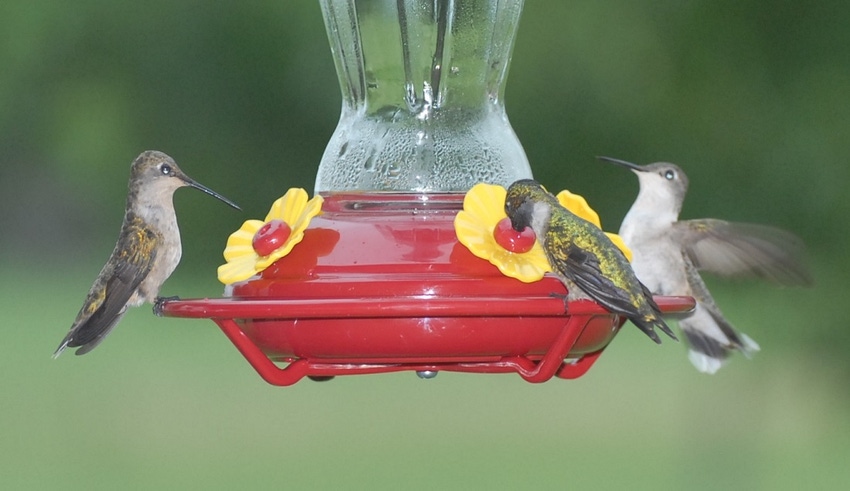
Hummingbird season is here at last and the little aerobats always provide about six months of entertainment and amazement, which my wife and I anticipate all winter and enjoy greatly all summer.
In fact, along with ruminants and honeybees, I consider hummingbirds to be among the most amazing of God's creatures. Ruminants, of course, tote around a complex internal biological vat of cellulose-digesting microflora that allow them to make a good living on highly fibrous material, manage huge amounts of growing vegetation, and provide food for other critters (like us humans). The complexity of that tiny-animal-society we call the rumen is astounding and actually still quite mysterious.
Honeybees have an amazing society that has a collective solution for every problem, and they make a big contribution to the job of pollinating flowering plants, in addition to storing enough extra nectar (honey) for the winter that humans can steal a little bit of it.
One of the original pollinators in the Americas, however, is the hummingbird. Each one visits hundreds of flowers per day, licking up nectar and spreading but not collecting pollen. They can fly backward and forward, hover in the air regardless of wind speed, and even fly upside down. They are territorial in claiming flower patches and feeders, but that doesn't stop the invasion and consumption by other hummingbirds.
They eat a lot of tiny insects such as gnats for protein, but much of their hypersonic metabolism runs on the sugar in the nectar they take from the flowers. Incidentally, if you think about it, healthy plants are putting out sugars in the soil to trade for nutrients with other soil life, and sugars in their flowering parts to get hummingbirds and other critters to carry their pollen from plant to plant, thereby perpetuating the next generation.
At any rate, this sugar is the very thing that drives hummingbird life, when by comparison such a high level of sugar helps kill most other critters. New research from the University of Toronto Scarborough shows they are good at burning both glucose and fructose, which are the individual components of sugar. This is a unique trait other vertebrates cannot achieve, particularly the use of fructose. In humans, fructose must go to the liver and be turned into fat.
The Toronto researchers explained hummingbirds require so much energy to flap their wings 50 times or more per second for hovering flight that if they were the size of a human, they would consume energy at a rate more than 10 times that of an Olympic marathon runner. They also explained that hummingbirds burn sugar so quickly, if they were the size of an average human they would need to drink more than one can of soda pop every minute.
This huge energy burn rate and consumption by hummingbirds is accomplished by burning only the most recently ingested sugar in their muscles while avoiding the energetic tax of first converting sugar into fat.
Those researchers don't yet understand how the little wonders can move sugars directly into muscle use, nor now they partition just the right amount of fat for needs like reproduction and migration.
In the bovine world, this reminds me a little of the ability cattle have to over-consume high-nitrogen forages like wheat pasture or some of the cool-season plants, cleave off the amine groups and burn the rest of the carbohydrate chain for energy and gain. This is not a behavior they can keep up endlessly because the nitrogenous compounds eventually become a form of poison in the blood and liver and must be expelled before the body can return to high function. However, it is a form of adaptation for times when grass was short and green and high in nitrogen and low in energy. Like the hummingbirds, God designed them perfectly for the environment in which he placed them.
About the Author(s)
You May Also Like




